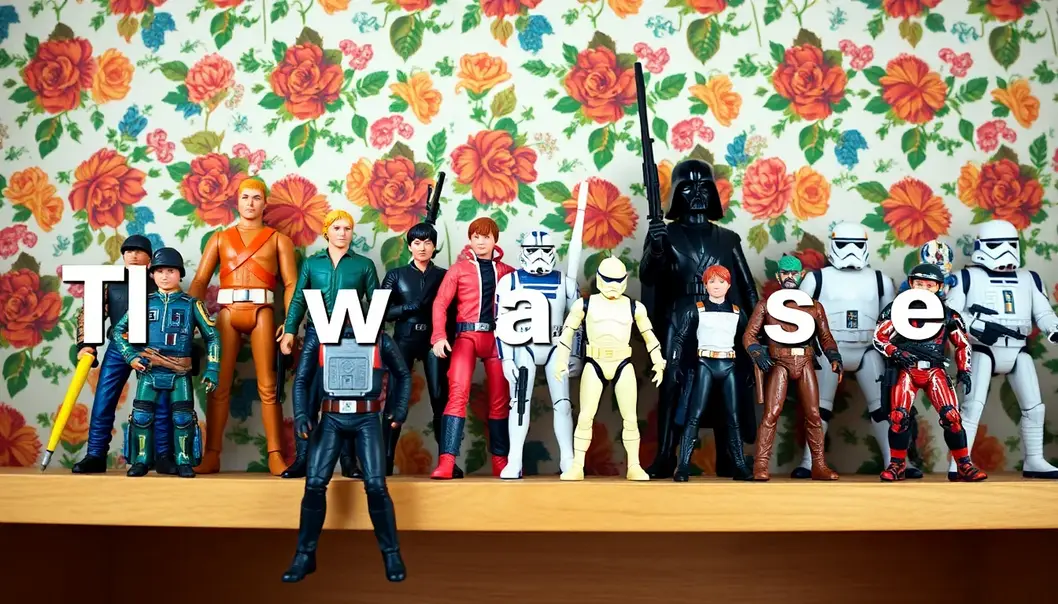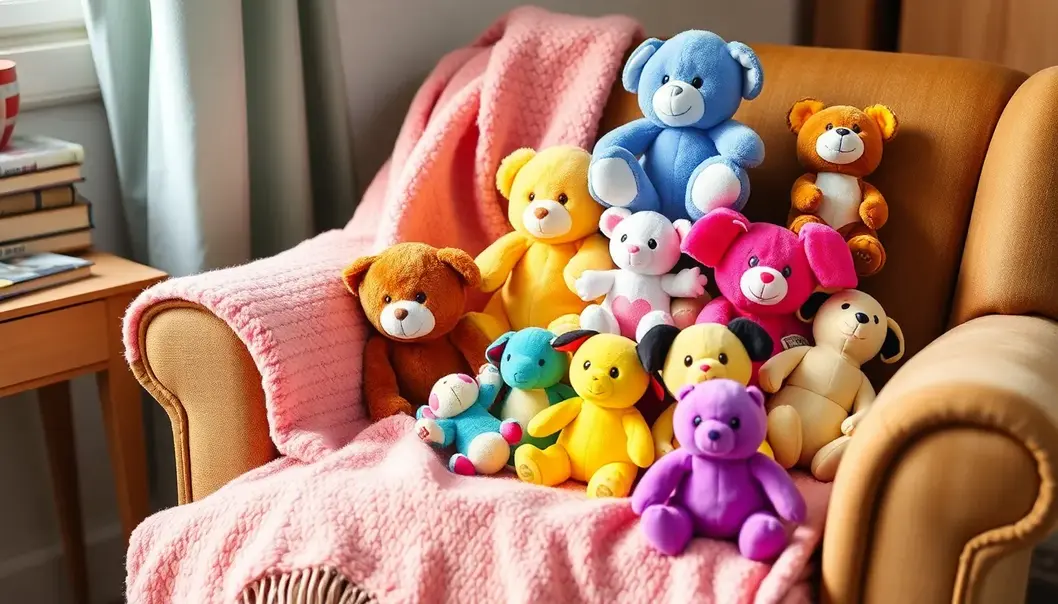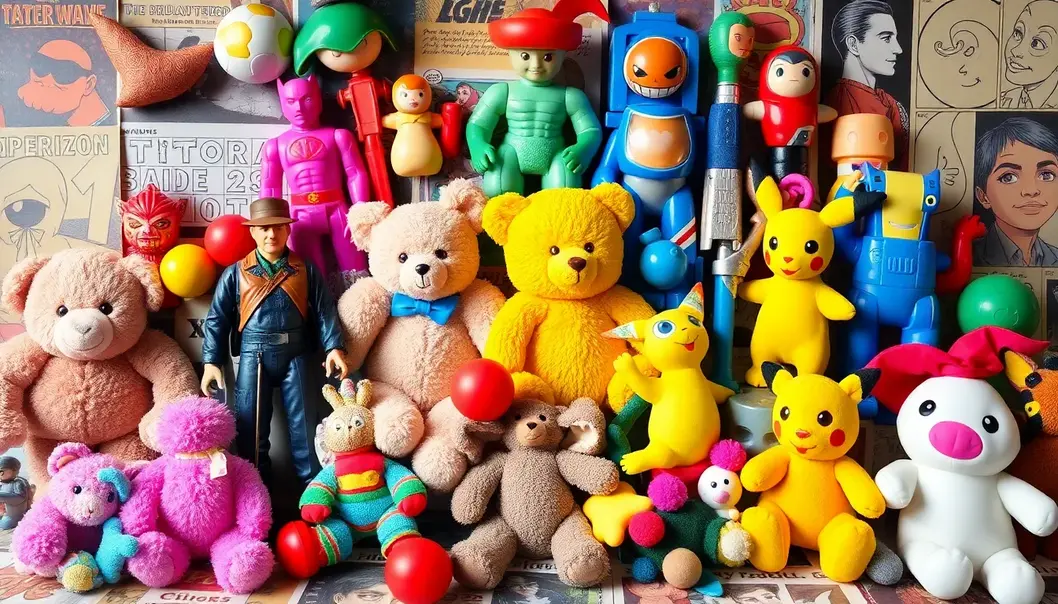From epic action figures to cuddly plush companions, some toys have transcended mere childhood entertainment to become iconic cultural phenomena. These toys not only sparked joy in countless children but also influenced fashion, language, and lifestyle choices across generations. In this article, we explore the stories behind a couple of these legendary toys that didn’t just entertain; they defined an era. Whether it’s about a figurine that redefined action or a cute creature that fostered connection, join us as we travel down memory lane to examine their lasting impact on pop culture. Ready to relive some nostalgia and see how your childhood favorites reshaped the world?
The Action Figures that Practically Ruled the Galaxy

The history of action figures is intricately woven into the fabric of pop culture, serving as more than just toys but as cultural touchstones that resonate across generations. Among the most significant of these are the action figures linked to G.I. Joe and the Star Wars universe, which have not only filled countless playrooms but have also left indelible marks on the male-focused narratives and cultural mythology.
Originally introduced in the 1960s, G.I. Joe revolutionized the toy industry with its articulation and adventurous themes, ushering in a new era where action figures were more than just miniature representations of soldiers—they were symbols of heroism and adventure, fostering resilience and creativity in young minds. This evolution in toy design captivated boys worldwide, and the accompanying narratives gradually transitioned from military missions to fantastical adventures, further broadening their appeal.
In the same era, Star Wars action figures emerged as a phenomenon that transformed the toy industry. These figures not only brought beloved characters into the hands of children, but they also extended the cinematic experience into everyday life. The intricate details and scalability of these toys allowed fans to recreate iconic scenes or imagine new storylines, blurring the boundaries between audience and storyteller. The Star Wars action figures were essential in establishing the concept of the modern action figure, intertwining storytelling and play in ways that frequently engaged users beyond the screen.
The marriage between these action figures and their respective media franchises spawned extensive lines of merchandise that entrenched them in pop culture history. The Star Wars series, with its expansive universe, served as a powerful narrative base for a comprehensive action figure line that later became synonymous with collectible culture. Meanwhile, G.I. Joe adapted to changing times, reimagining its characters to reflect contemporary themes and technologies, thereby maintaining its relevance.
These action figures also influenced the creation of broader merchandise ecosystems. Action figure lines often coincided with comics, animated series, and films, creating a multimedia approach that reinforced their cultural presence. Through licensing deals and partnerships, these toys expanded their reach, embedding themselves into varied aspects of daily life from birthday parties to Halloween costumes, making them perpetual fixtures in both formative experiences and nostalgic recollections.
Ultimately, the impact of G.I. Joe and Star Wars action figures extends beyond the narratives they are part of, influencing and shaping male-focused narratives in pop culture. By embodying adventure, heroism, and rebellion against odds, they have inspired countless stories and remain heralds of imagination and innovation. Today, they stand as more than toys—they are cultural icons, revered by collectors and casual fans alike, forever part of a continuing dialogue between history and imagination.
The Plush Phenomenon: From Teddy Bears to Pokémon

The evolution of plush toys in pop culture is a journey woven with threads of nostalgia, comfort, and innovation. From the inception of the teddy bear in the early 20th century, these cuddly companions have transcended their simple plaything status to become cultural icons.
The teddy bear’s origin is rooted in a story of compassion, a tale that blossomed into a symbol of comfort for children and adults alike. This initial popularity laid a foundation that allowed plush toys to capture the public’s imagination continuously. These toys became more than mere objects; they were emblems of affection, safety, and support during societal upheavals.
Moving into the late 20th century, the plush toy market experienced a seismic shift with the introduction of collectible plush items. The emergence of collectible plush toys offered an enticing blend of scarcity and variety, turning them into must-have items during the 1990s. Beanie Babies, for instance, highlighted how manufacturers’ strategic retirements of designs fueled a frenzied pursuit among both children and adults. These collectibles played a pivotal role in shaping pop culture trends as fans sought to complete their collections, often making significant financial investments. The sales and exchanges of these toys often resulted in intricate trading networks, expanding their cultural footprint beyond mere toys.
Beyond their physical presence, plush toys have also made their mark across various media. They have starred in iconic films, animated series, and even fashion runways, broadening their appeal and reinforcing their status as symbols of nostalgia and warmth. This is especially true for collections inspired by recognizable characters from popular franchises. Plush representations of these characters crossed generational lines, appealing not only to children but also to grown-ups who cherished their nostalgic value.
The plush phenomenon reached unprecedented heights with a wave of toys representing fictional creatures, most notably during the late 90s craze surrounding the pocket monster sensation. As these characters exploded into a multi-platform empire, plush toys naturally followed suit. They offered fans tangible connections to their beloved virtual entities, nurturing communities that celebrated these creatures in various forms—digital, physical, and even philosophical. These toys, with their endearing designs and emotional resonance, became indispensable merchandizing tools in the broader strategy of building lasting pop culture empires.
Plush toys often reappear in cultural moments of need, symbolizing stability and comfort across history. They have quietly stood as companions during personal and collective challenges, such as economic downturns or global events. Through their innate ability to evoke solace and happiness, plush toys maintain an ever-enduring presence in our lives, permeating the boundaries of age and time.
For collectors and casual fans alike, the allure of plush toys remains ever-strong. Their designs are timeless yet ever-evolving, meeting the desires of each new generation while still tugging at the heartstrings of those who remember them from childhood. As icons of pop culture, plush toys are more than objects; they are storied companions, forever embedded in our shared cultural narrative.
Final words
Reflecting on the impact of these toys, it’s clear they are more than mere children’s playthings. They’ve evolved into cultural touchstones that continue to influence new generations. Whether as cherished collectibles or nostalgic echoes of the past, their legacy endures. For young adults reflecting on their childhoods, these toys offer a powerful reminder of the enduring influence of play in shaping who we are today.
Relive your childhood and discover more iconic toys that shaped pop culture. Visit our store and start your collection today!
Learn more: https://www.nostalgiatoys.com/collections/featured
About us
NostalgiaToys offers a curated selection of vintage and modern toys that capture the essence of childhood and cultural history. Our collection caters to collectors and nostalgia enthusiasts looking to revisit fond memories or start a new hobby. Discover rare finds and relive the magic of iconic toys that shaped generational pop culture.

